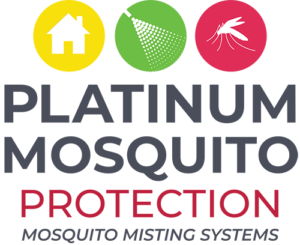3 no-no backyard bugs you need to know-know
As parents, we all want to provide our kids with a great yard, a safe space for them to play and explore. We want them to learn, to absorb the outdoors, and to not be afraid of all of the creepy crawly things they might find.
Of course, that would be a whole lot easier if all that lived in our yards were butterflies and ladybugs.
The truth is, though, our South Florida yards are jungles. Lurking among the blades of grass and exotic shrubbery are insects – large and small – that bite and sting enough to keep us locked up inside if we let them. With some education and prevention, however, it doesn’t have to be that way. Take a look at three insects you can teach your kids to watch out for:
Red Imported Fire Ants (RIFA)
Without question, RIFA is one of the most feared and despised insects in South Florida yards – and for good reason.
According to the University of Florida, Solenopsis Invicta Buren is native to South America and arrived in the United States between 1933 and 1945. It is now a well-established pest here.
Most often, RIFA nests are found in lawns, but they can also be along sidewalk edges, under patio pavers, and even in electrical boxes. During heavy rains, RIFA has been known to move their nests to higher ground or indoors.
Mounds in the lawn usually measure about 18” in diameter. When a mound is disturbed, perhaps by a child rolling across the lawn, the worker ants swarm to bite the intruder, latching onto skin with their powerful mandibles (jaws).
Once firmly attached, each ant can then lower its stinger into the victim, releasing its venom. While the bite of the ant is somewhat painful, it’s the venom that causes the most pain. In fact, the venom will result in a pustule at the sting site, swelling, burning, and, in some cases, anaphylactic shock.
Controlling RIFA requires a degree of vigilance. Individual mound saturation or broadcast methods are the most common methods of controlling the ants, but scientists are presently researching biological methods.
Puss Caterpillar
It takes a special kind of evil to be adorable and toxic – and such is the case for the puss caterpillar, one of the most venomous caterpillars in the United States.
Covered in a thick layer of fur, the caterpillar is truly tempting – especially for a child – to be picked up and petted. That would be the worst thing to do.
The fur is saturated with venom. Each strand of fur is actually a hollow spine, and each spine has a venom gland at its base. In an effort to protect itself, the puss caterpillar releases its venom-filled spine into the victim. The stings produce intense burning, followed by a rash in a red grid-like pattern that matches the spine pattern of the caterpillar. The sting has been described as more painful than that of a jellyfish.
In addition to this pain, other symptoms can be burning, itching, convulsions, and vomiting.
Most often, the puss caterpillar is found in oak and citrus trees, and they have been known to just fall from trees and land on unsuspecting victims. Fortunately, the caterpillar’s population is kept under control by means of natural enemies.
The puss caterpillar does have one redeeming trait, however. At the end of its caterpillar stage, it spins a cocoon and emerges as the southern flannel moth, which is completely venom-free.
Aedes aegypti
This is just a fancy way of naming a bug that’s on the news and on people’s minds more than any other: the yellow fever mosquito.
Actually, this mosquito has carried more than just yellow fever in its history. This particular species is the one responsible for carrying many of the viruses that have become part of the South Florida vernacular in recent years: Dengue, Chikungunya, and Zika.
Originally from Africa, Aedes aegypti arrived in the Americas centuries ago when Europeans began exploring the New World. Since then, they have adapted and made themselves very, very comfortable.
This culprit likes to set up shop close to human activity because female mosquitoes need blood in order to lay eggs. To do this, they are very good at locating any standing water, like that found in empty flowerpots, old tires, and unused children’s toys. Ideally, they like locations in shaded areas and water that contains some organic matter, such as decaying leaves.
Unlike other mosquito species, Aedes aegypti are more active during the day. That’s when they do their egg laying and biting. If one should get in the house, all bets are off – and though the mosquito is most prevalent at dusk and dawn, it can be active day and night.
To help lower mosquito populations and lower risk of bites, it’s important to reduce standing water around your yard, to wear long-sleeved clothing when possible, and to spray yourself with an insect repellant. And there is another protection option.
At Platinum Mosquito Protection, we would like to see you reclaim your backyard, so we treat all of it.
We use an insecticide based on Pyrethrum, a derivative of chrysanthemums. The solution is then attached to a misting system installed around the perimeter of your yard to create a zone where the whole family can live and play with less risk.
If you’d like to enjoy your yard again – or learn more about the backyard bugs that are bugging you – contact us today for a free, on-site consultation.

